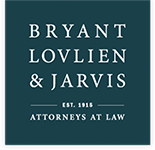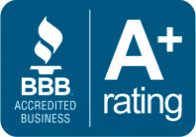Authored by John Sorlie
With the value of real estate once again on the rise, clients will frequently ask whether there is a way to avoid capital gains tax when real estate that has appreciated in value is sold. Luckily Section 1031 of the Internal Revenue Code allows an owner to defer payment of the capital gains tax after a sale if the taxpayer exchanges the property for other “like-kind” property. An exchange of property, like a sale, is generally a taxable transaction. However, under Sec. 1031(a)(1) of the Code, gain or loss will not be recognized when property held for productive use in a trade or business or investment purposes is exchanged solely for property of like kind if the replacement property will also be to be held either for productive use in trade or businesses or for investment. Like-kind exchange treatment is not available for exchanges of certain assets, the most significant of which are: securities (such as stock, bonds, or notes); property held primarily for sale (i.e. not investment property); and, interests in a partnership.
It is most common to see Sect. 1031 used to defer capital gains tax on the sale of real estate held for long-term investment. The “held for investment” requirement excludes parcels that were purchased for the purpose of development, unless the property is sold prior to development.
One might think that it is necessary to find someone with whom you can exchange your property to qualify for tax deferral under Section 1031. However, it is rare to find two taxpayers owning separate parcels that desire to exchange their properties with each other. Rather, it is more common to undertake a “deferred” exchange. These exchanges allow a taxpayer to sell a parcel, find a replacement parcel, and then exchange the funds toward the purchase of a replacement parcel. A non-simultaneous or “deferred” exchange can qualify for like-kind treatment if the replacement property is identified within 45 days of the transferor relinquishing the exchange property (the “identification period”), and if the replacement property is received before the earlier of 180 days after the date the taxpayer relinquishes the property, or the due date (including extensions) of the transferor’s income tax return (the “exchange period”).
To qualify for non-recognition in a deferred exchange, the taxpayer must not accept the funds directly from the sale of the relinquished property. Rather, the funds must be held by a neutral third party while replacement property is located and purchased. Therefore, it is common to use a qualified intermediary to park the exchange proceeds until replacement property can be purchased. There must be an exchange agreement between the taxpayer and the qualified intermediary delineating how the funds are to be handled. Typically, when the taxpayer contemplates a 1031 exchange, the taxpayer will assign the proceeds received from the sale to the qualified intermediary and these funds will go directly from closing to the intermediary at closing.
During the 45-day identification period, the taxpayer must then identify up to three properties without regard to fair market values (the “3-property rule”), or any number or properties as long as their aggregate fair market value does not exceed 200% of the value of all relinquished properties on the dates of transfer (the “200% rule”).
When replacement property is located and a purchase agreement is negotiated, the qualified intermediary will be named as the purchaser of the replacement property, and the proceeds of the previous sale will be used to purchase the replacement property. The property can be directly deeded to the taxpayer when the purchase of the replacement property occurs.
Assuming the replacement property is purchased within the 180 day exchange period, there will be no gain or loss recognized on the sale. However, if the cost of the replacement property is less than the relinquished property, then there will be tax owning on the difference. After the exchange occurs, the taxpayer will retain the same cost basis in the replacement property that the taxpayer had in the relinquished property.
There are a number of variations on this general deferred exchange. For example, it is possible to do a “reverse exchange” where the replacement property is acquired before the relinquished property is sold. Also, in some circumstances it may be possible to used tax deferred funds to make improvements to the replacement property prior to purchase.
Completing a Section 1031 exchange can be quite complicated and there are numerous requirements that must be satisfied to successfully complete an exchange. It is advisable to work both with an attorney familiar with the 1031 rules and a qualified intermediary with a proven track record.


